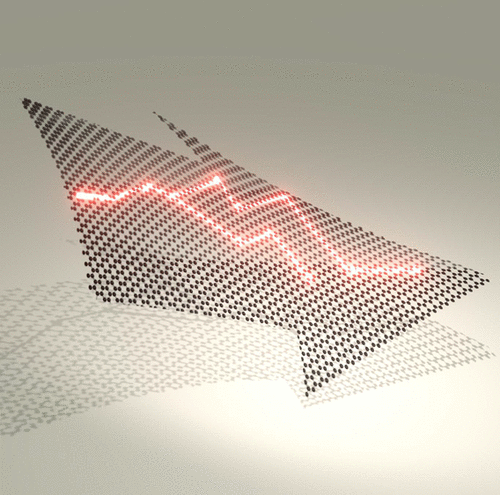当前位置:
X-MOL 学术
›
ACS Photonics
›
论文详情
Our official English website, www.x-mol.net, welcomes your
feedback! (Note: you will need to create a separate account there.)
Quantum Nanophotonics in Two-Dimensional Materials
ACS Photonics ( IF 6.5 ) Pub Date : 2021-01-07 , DOI: 10.1021/acsphotonics.0c01224 Antoine Reserbat-Plantey 1 , Itai Epstein 1, 2 , Iacopo Torre 1 , Antonio T. Costa 3 , P. A. D. Gonçalves 4 , N. Asger Mortensen 4, 5, 6 , Marco Polini 7, 8, 9 , Justin C. W. Song 10, 11 , Nuno M. R. Peres 3, 12 , Frank H. L. Koppens 1, 13
ACS Photonics ( IF 6.5 ) Pub Date : 2021-01-07 , DOI: 10.1021/acsphotonics.0c01224 Antoine Reserbat-Plantey 1 , Itai Epstein 1, 2 , Iacopo Torre 1 , Antonio T. Costa 3 , P. A. D. Gonçalves 4 , N. Asger Mortensen 4, 5, 6 , Marco Polini 7, 8, 9 , Justin C. W. Song 10, 11 , Nuno M. R. Peres 3, 12 , Frank H. L. Koppens 1, 13
Affiliation

|
The field of two-dimensional (2D) materials-based nanophotonics has been growing at a rapid pace, triggered by the ability to design nanophotonic systems with in situ control, unprecedented number of degrees of freedom, and to build material heterostructures from the bottom up with atomic precision. A wide palette of polaritonic classes have been identified, comprising ultraconfined optical fields, even approaching characteristic length-scales of a single atom. These advances have been a real boost for the emerging field of quantum nanophotonics, where the quantum mechanical nature of the electrons and polaritons and their interactions become relevant. Examples include quantum nonlocal effects, ultrastrong light–matter interactions, Cherenkov radiation, access to forbidden transitions, hydrodynamic effects, single-plasmon nonlinearities, polaritonic quantization, topological effects, and so on. In addition to these intrinsic quantum nanophotonic phenomena, 2D material systems can also be used as sensitive probes for the quantum properties of the material that carries the nanophotonics modes or quantum materials in its vicinity. Here, polaritons act as a probe for otherwise invisible excitations, for example, in superconductors, or as a new tool to monitor the existence of Berry curvature in topological materials and superlattice effects in twisted 2D materials. In this Perspective, we present an overview of the emergent field of 2D-material quantum nanophotonics and provide a future perspective on the prospects of both fundamental emergent phenomena and emergent quantum technologies, such as quantum sensing, single-photon sources, and quantum emitters manipulation. We address four main implications: (i) quantum sensing, featuring polaritons to probe superconductivity and explore new electronic transport hydrodynamic behaviors, (ii) quantum technologies harnessing single-photon generation, manipulation, and detection using 2D materials, (iii) polariton engineering with quantum materials enabled by twist angle and stacking order control in van der Waals heterostructures, and (iv) extreme light−matter interactions enabled by the strong confinement of light at atomic level by 2D materials, which provide new tools to manipulate light fields at the nanoscale (e.g., quantum chemistry, nonlocal effects, high Purcell enhancement).
中文翻译:

二维材料中的量子纳米光子学
基于二维(2D)材料的纳米光子学领域正在迅速发展,这是由于能够设计具有原位控制,前所未有的自由度以及自下而上构建材料异质结构的纳米光子系统的能力所致。具有原子精度。已经确定了宽泛的极化子类别,包括超限光学场,甚至接近单个原子的特征长度尺度。这些进展对新兴的量子纳米光子学领域产生了真正的推动作用,在该领域中,电子和极化子的量子力学性质及其相互作用变得至关重要。例子包括量子非局部效应,超强光与物质的相互作用,切伦科夫辐射,进入禁跃区,流体动力学效应,单等离激元非线性,极化定量,拓扑效应等。除了这些固有的量子纳米光子现象外,二维材料系统还可以用作敏感探针,以探测携带纳米光子模式或附近量子材料的材料的量子特性。在这里,极化子充当超导体中其他不可见的激发的探针,或者充当监视拓扑材料中Berry曲率的存在和扭曲2D材料中超晶格效应的新工具。在此“观点”中,我们将概述2D材料量子纳米光子学的新兴领域,并为基本的新兴现象和新兴的量子技术(如量子感测,单光子源和量子发射器操纵)的前景提供未来展望。 。
更新日期:2021-01-20
中文翻译:

二维材料中的量子纳米光子学
基于二维(2D)材料的纳米光子学领域正在迅速发展,这是由于能够设计具有原位控制,前所未有的自由度以及自下而上构建材料异质结构的纳米光子系统的能力所致。具有原子精度。已经确定了宽泛的极化子类别,包括超限光学场,甚至接近单个原子的特征长度尺度。这些进展对新兴的量子纳米光子学领域产生了真正的推动作用,在该领域中,电子和极化子的量子力学性质及其相互作用变得至关重要。例子包括量子非局部效应,超强光与物质的相互作用,切伦科夫辐射,进入禁跃区,流体动力学效应,单等离激元非线性,极化定量,拓扑效应等。除了这些固有的量子纳米光子现象外,二维材料系统还可以用作敏感探针,以探测携带纳米光子模式或附近量子材料的材料的量子特性。在这里,极化子充当超导体中其他不可见的激发的探针,或者充当监视拓扑材料中Berry曲率的存在和扭曲2D材料中超晶格效应的新工具。在此“观点”中,我们将概述2D材料量子纳米光子学的新兴领域,并为基本的新兴现象和新兴的量子技术(如量子感测,单光子源和量子发射器操纵)的前景提供未来展望。 。











































 京公网安备 11010802027423号
京公网安备 11010802027423号